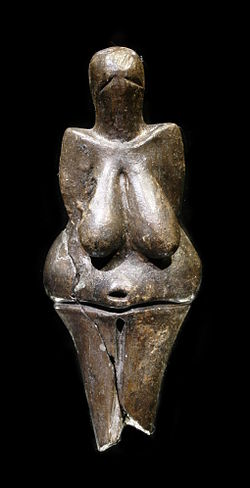Not so long ago, I’ve shared posts about longevity in fantasy and how half-breeds unbalance the natural cause of things. Today, I’ll look into fertility and the way it can be used to tell more about the setting/culture.
What I mean by that is the average amount of children a pair has, how the setting influeces that, and how it can tie in with the culture.
A bit of biology first
A statistic defined as total fertility rate exists to show the average children per woman’s lifetime. In present-time world, the rate of 2,1 is required for stable population. The 0,1 makes up for people who – for whatever reasons – won’t reproduce.
This number depends on several factors and would grow higher in world that lacks good healthcare and/or with higher rate of premature deaths (such as to wars, famine, disease…). Falling below the rate needed for population replenishment will lead to the population dwindling and significantly exceeding it will lead to population expansion (obviously).
Fictional cultures
As with many other aspects of fictional cultures, even their approach to fertility and the ‘proper’ amount of children may differ significantly, as will the beliefs tied to fertility.

Of those aspects, a culture’s approach to fertility will make their way to art (in ancient cultures, this mostly meant cave drawings and sculptures from bones or stones), the prevalent idea of beauty (what body parts they focus on and what is the most attractive dimension), and possibly traditions related to fertility.
I’ve hinted at this in on of my posts about seasonal inspiration: spring is, due to the awakening of nature, often tied to traditions regarding with fertility, including Easter and their pagan predecessors: both eggs and rabbits are seen as symbols of fertility.
This also affects the way children are seen by the culture: they might be seen as the future and given a lot of attention in cultures where fertility is a desired trait – but it may also lead to (whether self-imposed or community-imposed) inferiority complexes for people struggling to conceive children, let alone completely infertile. And, should the populace face a shortage of food, this might also affect who gets a priority: if they want their children to grow strong, having them malnourished won’t help.
To use a few examples from books I’ve read: one depicted a warrior-like culture where it was considered normal for a man to father at least four children. Due to the warrior culture, the prevalent reason for that was likely to be a high mortality in violent conflicts that eventually balanced out the sheer amount of children. As many young men went into war, the surviving people were then often helping with raising the (semi-orphaned) children.
Another mentioned a community (not saying culture because it seemed like a nation on a small island) that put a major emphasis on fertility and – as I mentioned above – children. One of the major characters was, due to a severe injury, left sterile, which led her to see herself as ‘unworthy to be a wife’ (for lack of a better term) – though she wasn’t against being in a ‘friends with benefits’ relationship.
To continue from this example, it might also lead to how a culture treats orphans: if they value children and consider them their future, people might be much more likely to become a surrogate parent – and those struggling with their own offspring might see it as a way to indeirectly fulfill their purpose.
Impact on intimacy
As usual, cultural traits will have impact on the way a culture sees love and intimacy. In a few older posts, I’ve shared my views on this. To recap them: the setting will affect the usual approaches to love, what they consider a proper way of courting, and how are the lives of a pair tied together (is it a shaman/priest or a town hall officers who performs the ‘ritual’?).
It also affects how the cutlture tends to approach the actual intercourse: warrior cultures will probably favor something rougher instead of long foreplays – though this is also affected by social status.
To sum this up: how a fictional culture sees family, procreation, and children is an important factor. It can affect how fast can the populace replenish from a sudden war with major losses (which is easier for cultures favoring fertility) or be a sign of a coming donwfall if a culture at its peak faces dwindling procreation rates (look at Euro-American population in these days).
So, that’s what I wanted to share today. Feel free to share your thoughts or ask questions – and see you next time.

Very philosophical. We see it in today’s world where, in third world countries with higher mortality, families have more children.
LikeLiked by 1 person
Well, geography was one of the main subjects of my studies. I am trying to see how it (with some help from biology) can help in creating a believable fictional world.
LikeLiked by 1 person
Nice, I studied geography and GIS as well.
LikeLike
Pingback: Birth control in fantasy and Sci-Fi | Tomas, the wandering dreamer